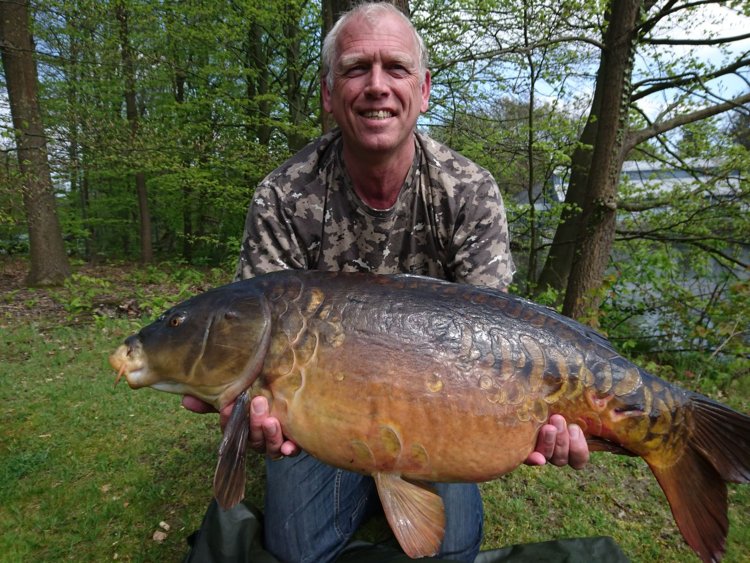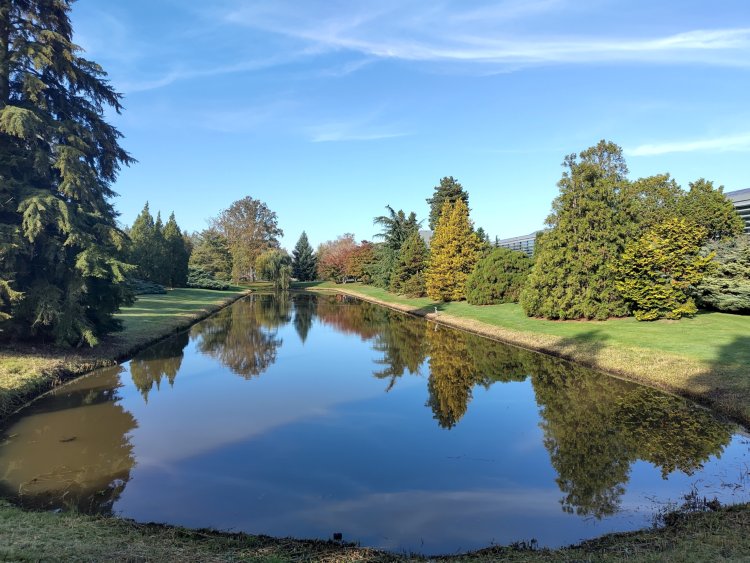Carp Fishing: From Hobby to Caring for Water Quality
The beautiful estate of the University of Twente is home to numerous picturesque ponds, most of which are accessible to members of the fishing club, Hengelsportvereniging Carperdiem. How can we ensure that the biodiversity of our waters remains high and that all aquatic inhabitants continue to have a sustainable home?
Biodiversity is not only visually appealing but also essential for carp and other fish, as a diverse environment contributes to their health and well-being. A healthy ecosystem includes a mix of plants, small animal species, and food sources necessary for carp to thrive. In a diverse aquatic environment, there are plenty of food sources and hiding places, which enhances the overall health of the fish population. Without biodiversity, carp lack the natural resources they need to survive and grow.
Caring for the ecosystem
Carp fishing is a centuries-old hobby where anglers used to bait carp with simple pieces of cheese or bread. Today, carp fishing has evolved, with anglers using specialized bait balls known as boilies. These boilies contain nutritious ingredients that promote fish growth, while excess substances are excreted by the fish. However, using boilies requires responsibility: always choose fresh products without sweeteners containing glycol, as they can disrupt fish reproduction. Additionally, it's important not to overfeed. Uneaten bait will rot, leading to a decline in water quality, which ultimately harms all aquatic inhabitants.

Hermen Bruins
Threats to biodiversity and water quality
Several factors threaten the biodiversity and water quality of the campus ponds. For example, pollution from sewage can be a problem. During heavy rainfall, the sewage system may overflow, allowing wastewater with unwanted substances like chemicals and pathogens to enter the water. This harms biodiversity and, consequently, the carp population, as the decline of smaller, supporting species impacts the entire ecosystem.
Over the years, soil quality in many ponds on the UT campus has deteriorated, primarily due to oak leaves blowing into the water and sinking. The slow decomposition of these leaves releases tannic acid and consumes significant oxygen, which is harmful to fish and other aquatic animals.
Furthermore, wild carp face difficulties reproducing due to predators and birds. Cold periods often prevent the development of fertilized eggs, putting additional pressure on the carp population. A few years ago, specially bred young carp were released, better adapted to the conditions.
What can anglers do to promote biodiversity?
Together, we can contribute to healthy biodiversity in the UT waters. A few tips:
- Avoid overfeeding and use biodegradable bait
Feed fish in moderation and choose naturally biodegradable bait to prevent soil pollution. - Leave no waste behind
Ensure the surroundings remain clean and do not leave behind any litter that could harm aquatic life. - Respect the fish you catch
Handle every fish you catch with care and release it back into the water as quickly as possible. - Avoid introducing invasive species
Never introduce invasive plants or animals, such as aquarium species, into the pond. If you catch an invasive crayfish, ensure it does not spread further.
Together, we can protect the biodiversity in our fishing waters and ensure that future generations can continue to enjoy carp fishing.

Biodiversity at UT
Strengthening biodiversity on our campus is one of our sustainability goals at the University of Twente. By improving monitoring, we gain knowledge about biodiversity on campus in general, which helps us decide on the best ways to support it. In 2024, we started the yearly Bioblitz, in which anyone can help monitor species via the app ObsIdentify. Several activities were organised to raise awareness of biodiversity (such as bird observation). A biodiversity council was established, where CFM (Campus & Facility Management) consult with biodiversity enthusiasts on how maintenance can contribute to an improved habitat for species. Furthermore, thanks to a Climate Centre grant, we are working on making data on green maintenance and biodiversity accessible for research and education.
Would you like to find out more about sustainability at UT? Please go to utwente.nl/sustainability.





